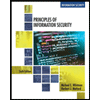Suppose there are three nodes in a network, A, B, and C. A starts transmitting over the medium at time t = 0. The time to transmit a single frame is 100 units. B and C both sense the medium at t = 5 units and detect that the medium is busy. B and C both have data to transmit. If A, B, and C were to use a CSMA/CD protocol, suppose that the time at which B and C attempt transmission is given by tB1 and tC1. If A, B, and C were to use a CSMA/CA protocol, suppose that the time at which B and C attempt transmission is given by tB2 and tC2. What can be said about the values of tB1, tC1, tB2, and tC2? Choose the most appropriate response. In the choices below, the notation >= represents "greater than equal to", and != represents "not equal to". tB1= tC1 = 105, tB2 >= 105, and tC2 >= 105 tB1> 100, tC1 > 100, tB2 > 100, and tC2 > 100 tB1= tC1 = tB2 = tC2 = 100 tB1= tC1 = 100, tB2 >= 100, and tC2 >= 100
Suppose there are three nodes in a network, A, B, and C.
A starts transmitting over the medium at time t = 0. The time to transmit a single frame is 100 units.
B and C both sense the medium at t = 5 units and detect that the medium is busy. B and C both have data to transmit.
If A, B, and C were to use a CSMA/CD protocol, suppose that the time at which B and C attempt transmission is given by tB1 and tC1.
If A, B, and C were to use a CSMA/CA protocol, suppose that the time at which B and C attempt transmission is given by tB2 and tC2.
What can be said about the values of tB1, tC1, tB2, and tC2? Choose the most appropriate response.
In the choices below, the notation >= represents "greater than equal to", and != represents "not equal to".
- tB1= tC1 = 105, tB2 >= 105, and tC2 >= 105
- tB1> 100, tC1 > 100, tB2 > 100, and tC2 > 100
- tB1= tC1 = tB2 = tC2 = 100
- tB1= tC1 = 100, tB2 >= 100, and tC2 >= 100
Step by step
Solved in 2 steps






